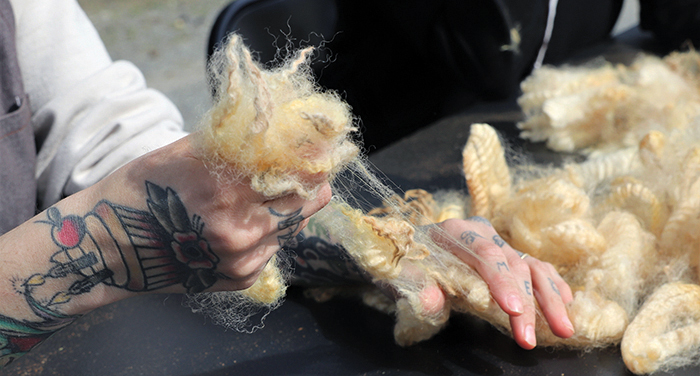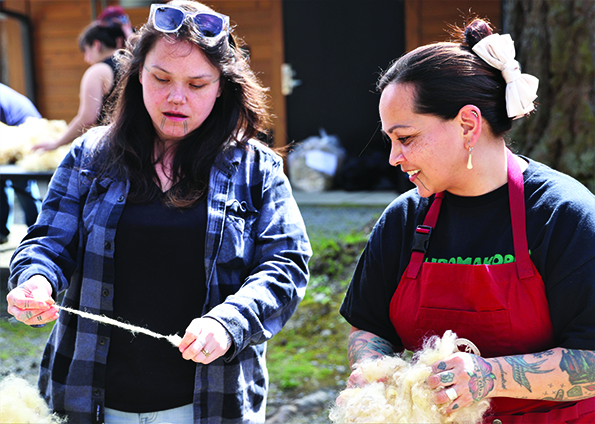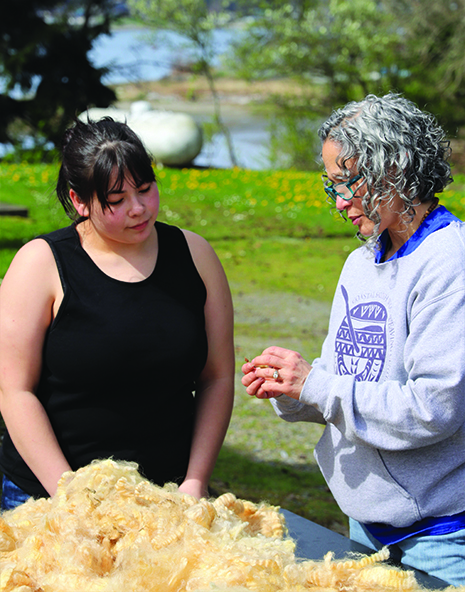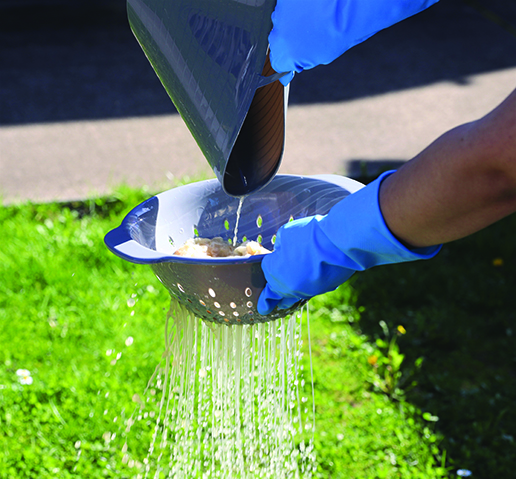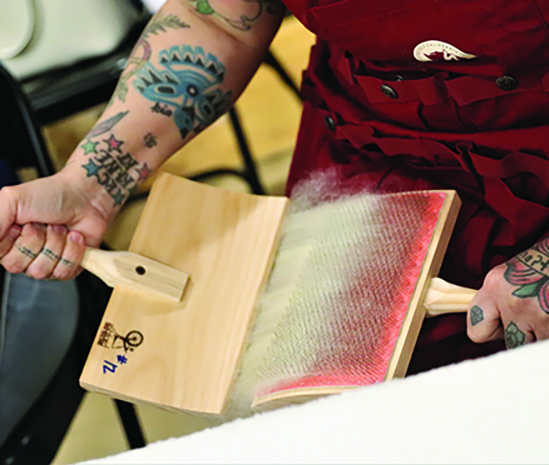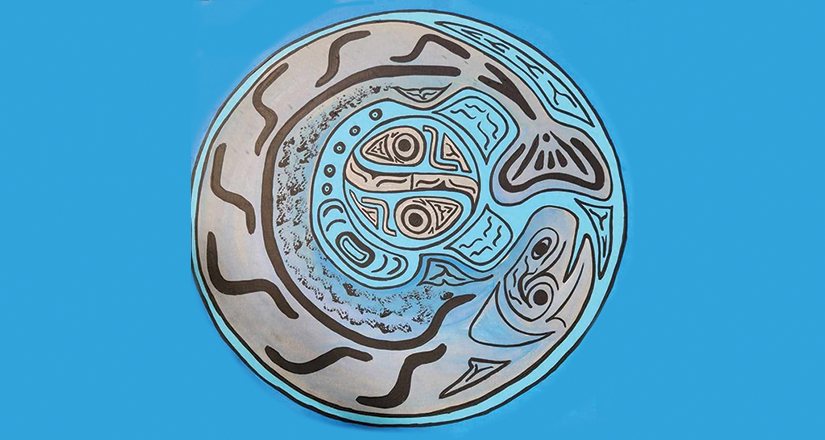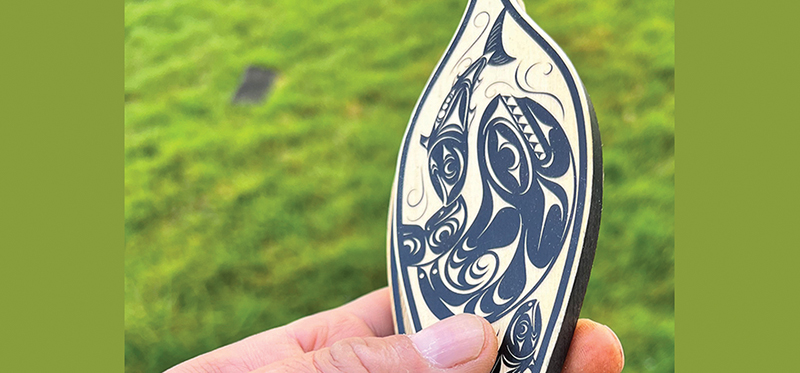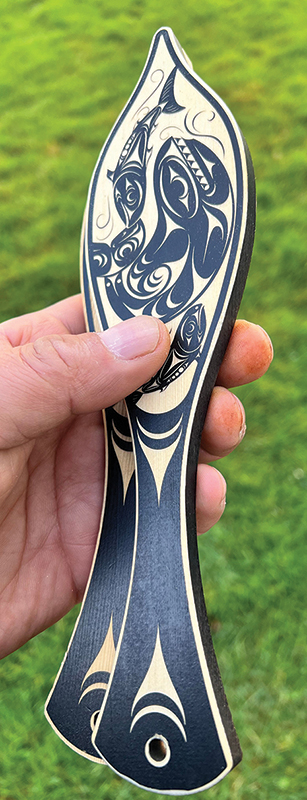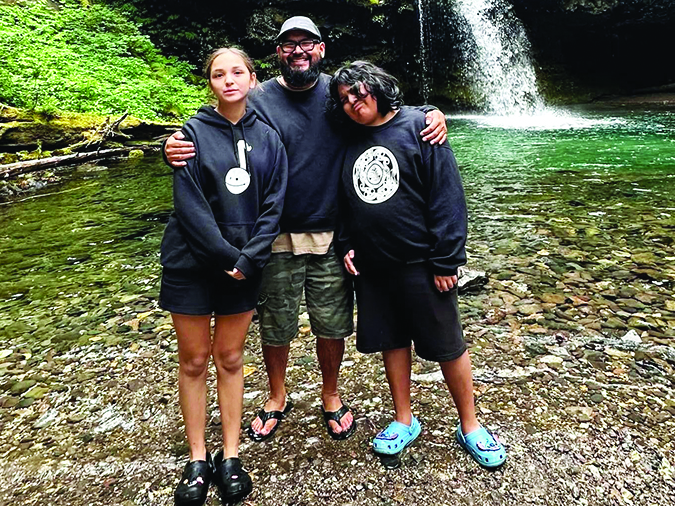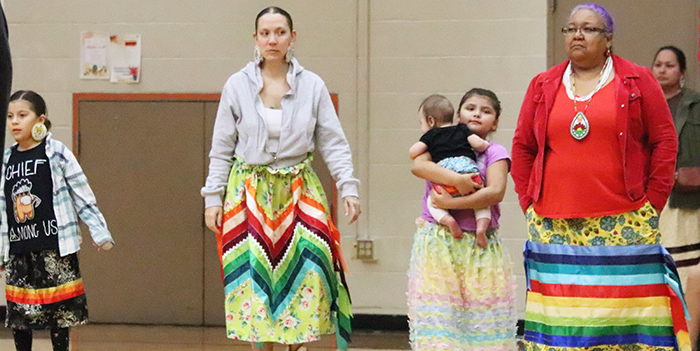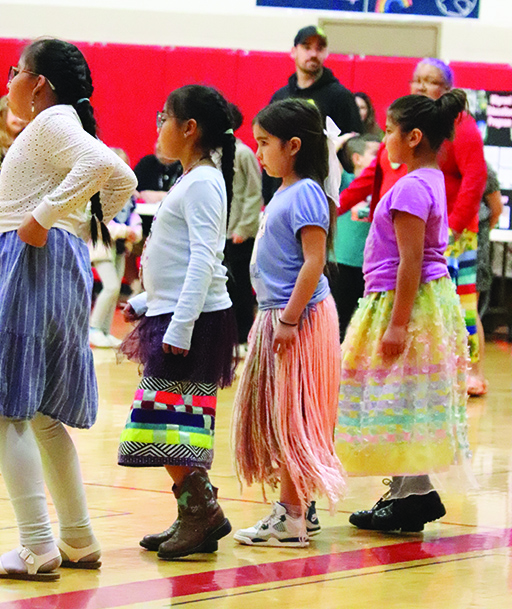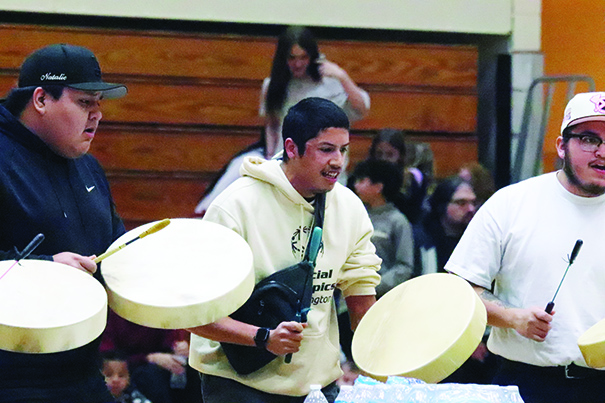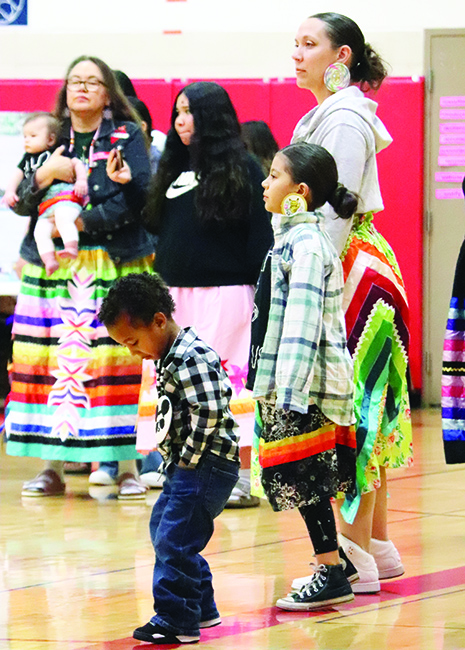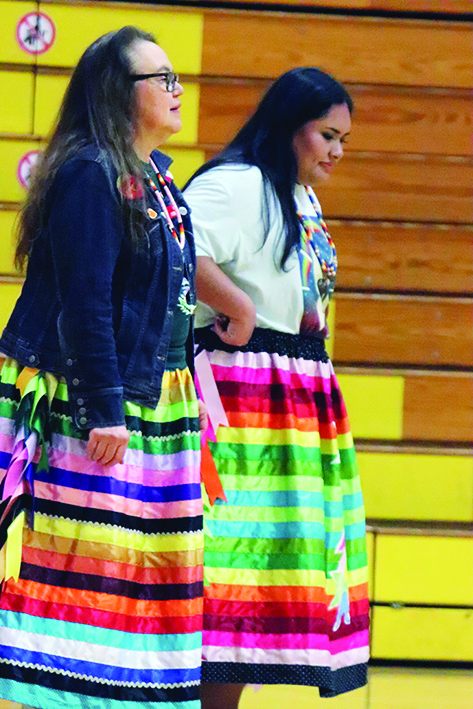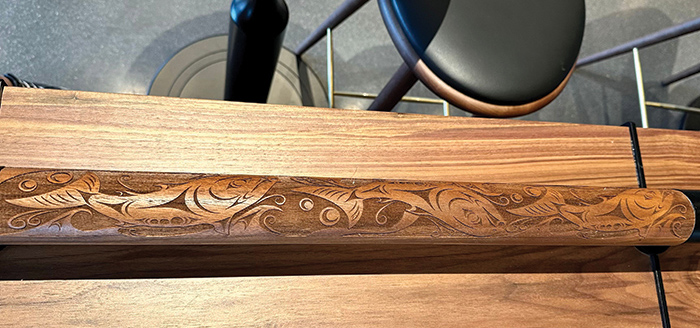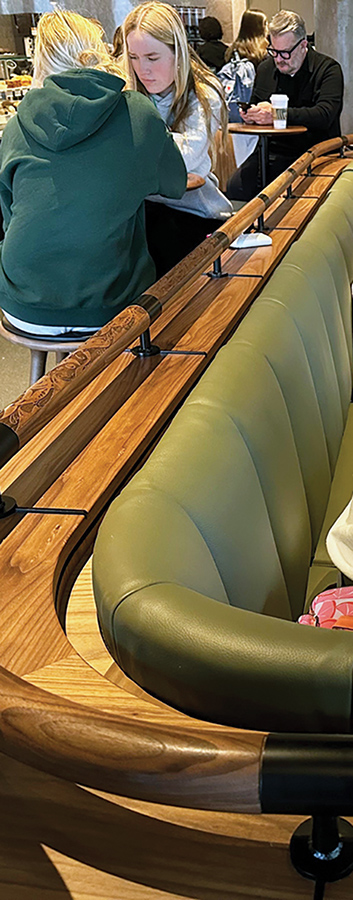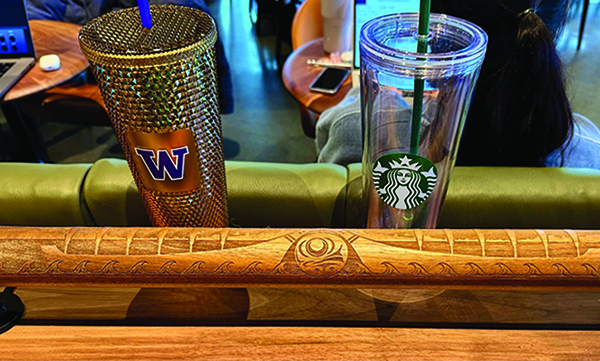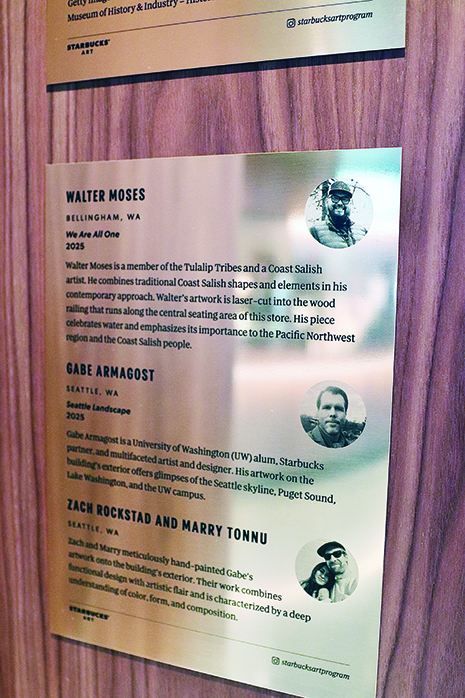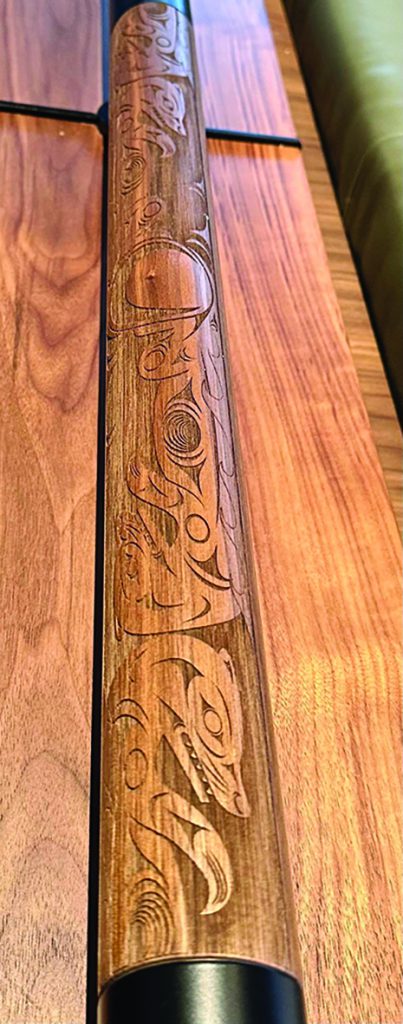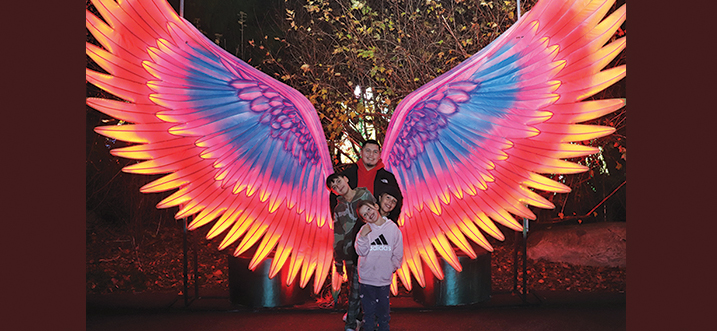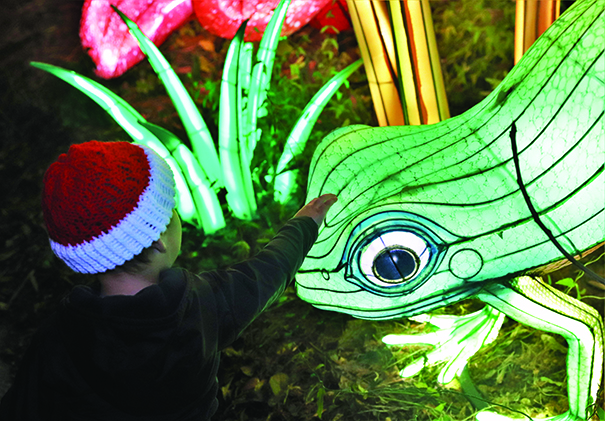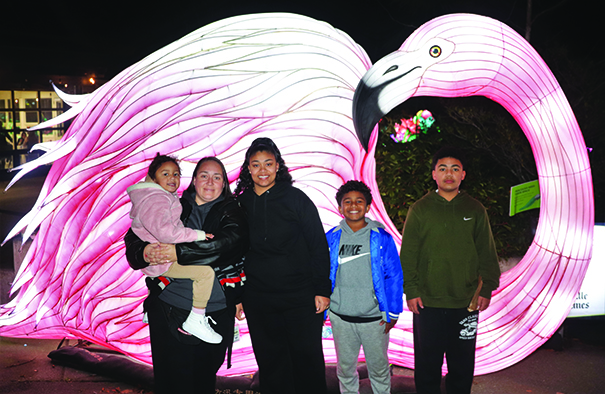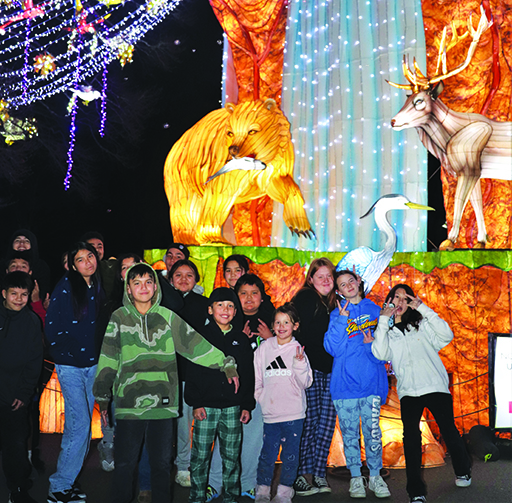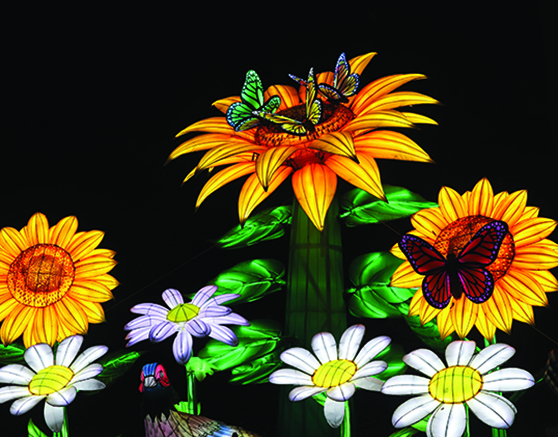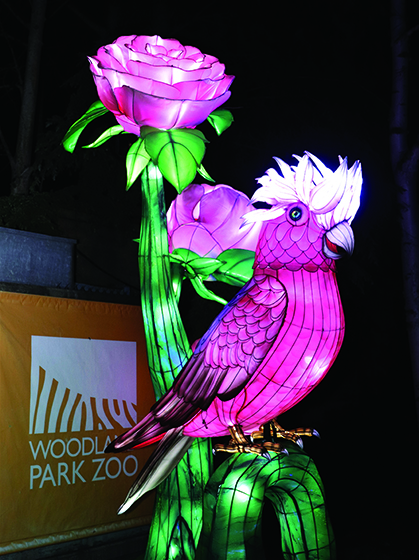
By Kalvin Valdillez, Tulalip News
“Easter Bunny, will you hop with me?” asked a young Tribal member on the afternoon of April 19. Once her request was met with a head nodding yes from an Easter Bunny standing over 6 feet tall, she shrieked with joy and began jumping up and down with the bunny. This heartwarming moment was met with a resounding ‘aww’ from the multiple volunteers of the 2025 Easter Bunny Run, which included members of the local nonprofit organization, Together We’re Better, and the Tulalip Bay Fire Department.

The ‘hop along’ was a popular request by many children at this year’s event. And after the third or fourth time the bunny was called upon to hop with the kiddos, Together We’re Better Founder, Malory Simpson, exclaimed “This is why we do this. This is what it’s all about.”

Born out of a desire to bring back a sense of normalcy to children on the reservation, Together We’re Better organized the very first Easter Bunny Run during the pandemic. At the time, Malory explained that the nonprofit usually held an egg hunt for the community each year. However, with gathering restrictions in place, the nonprofit improvised and decided to bring Easter to the doorsteps of Tribal families.
The Easter Bunny Run was such a great success, that they decided to make it an annual springtime tradition. This was the fifth year the event was held and is something the community looks forward to every Easter. Not only is it a highlight for the kids, but the parents also match their children’s eagerness to greet the bunny and always have their phones out, ready to snap a pic with the loveable character.

Together We’re Better originally drew inspiration from the Tulalip Bay Fire Department’s annual Santa Run, in which Saint Nick visits all the neighborhoods within the station’s jurisdiction. The foundation reached out to the fire department to see if they wanted to participate in the event during the first run, and ever since TBFD and their mascot Sparky the Dalmatian has joined in on the fun.

Said TBFD First Responder, Tara Conyers, “We feel the Easter Bunny Run is important because we always like to engage with the community. We like to show our support for any event. We want to let the community know that we’re here for them, because it is true that when you work together with your community and your neighbors, we are better. We take pride in getting to know our neighborhoods and our communities, and we don’t want everyone to just see us when we show up for an emergency. We want them to recognize our faces when we come to an emergency, because we’ve been to all these events, and they know that we’re here and we’re a safe place, and they can always come to us, even if it’s not an emergency. We love seeing all the kids, and also all the adults start acting like kids again. It’s fun seeing everyone laughing and smiling.”

This year, unfortunately, Sparky couldn’t make the trip to Tulalip due to a scheduling conflict. But a few members of the firehouse were able to attend in his place. The Easter Bunny held the Run down solo and got the kids hyped up as he passed out sugary treats, easter eggs, and toys at numerous playgrounds in Tulalip’s housing developments.
Together We’re Better’s own Natosha Gobin shared, “The Together We’re Better events are so much fun to participate in because it is community driven. For the Easter Run, a lot of community members look forward to stuffing eggs, buying snacks, and doing whatever they can to help. It’s nice to take time and visit with the families and go to all the different developments. It feels so good to be with the community for a positive reason and to see how much this means to the families as a whole.”

Malory expressed, “Giving back to the community always feels good. This is all community effort; it makes my heart happy to see the community coming together to take care of each other. I just love it. The smiles and laughter make you feel really good inside. Just seeing the kids get excited is one of the best things about the event. It’s pretty fun to see all of their reactions and see how happy the kids are to spend some time with the Easter Bunny.”

If you are looking to get more involved with the community, Together We’re Better is always accepting donations, whether that is goods, funds, or your personal volunteered time. And it’s important to note that they are resurrecting one of their more popular events, the monthly Community Potluck, with their first get together scheduled for Saturday, May 17 at 3:00 p.m. For more information, please contact Malory Simpson at (425) 905-9137 or Natosha Gobin at (425) 319-4416.






















